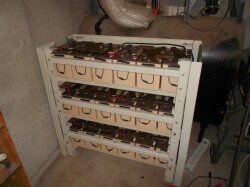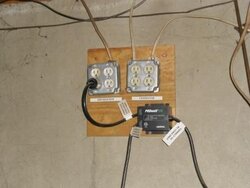If a Grunfos 15-58 uses 87watts on speed3, will a 150w 12v inverter run it appropriately?
http://www.theinverterstore.com/180-watt-pure-sine-wave-inverter.html
http://www.theinverterstore.com/180-watt-pure-sine-wave-inverter.html
If a Grunfos 15-58 uses 87watts on speed3, will a 150w 12v inverter run it appropriately?
http://www.theinverterstore.com/180-watt-pure-sine-wave-inverter.html
I thought this one was pure sine...... I will go with something bigger, but for someYou may have an issue with the inexpensive modified sine wave inverters vs sine wave inverters in that the circulator may run noisily and run hot. The "chopping" msw is not the same as line power.
If you use a fluke 87v or other meter that measures true rms voltage on a modified sine wave inverter it'll read the same as a pure sine wave inverter.Test the output voltage of a modified sine wave inverter with your meter and tell me what it reads.
does it have an automatic transfer switchSo I ended up going with the Xantrex PRO sine 600. Got it from donrowe.com for $150


We use essential cookies to make this site work, and optional cookies to enhance your experience.

